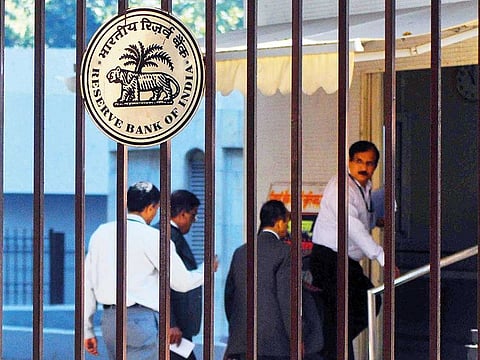Risk aversion depresses India's bank credit growth says central bank
Credit growth declined to 5.9 per cent in March 2020 from 13.2 per cent in March 2019

Also In This Package
New Delhi: Heightened risk aversion pulled the overall credit growth rate of scheduled commercial banks to 5.9 per cent on a year-on-year (y-o-y) in March 2020, the RBI Financial Stability Report (FSR) said on Friday.
Accordingly, the overall credit growth declined to 5.9 per cent in March 2020 from 13.2 per cent in March 2019.
"Bank credit, which had considerably weakened during the first half of 2019-20, slid down further in the subsequent period with the moderation becoming broad-based across bank groups," the report said.
"Subdued bank credit shows clear signs of risk aversion."
Also Read: India’s forex reserves cross $500b mark
According to the report, in terms of wholesale credit the outstanding at the end of March 2020 of public sector banks (PSBs) accounted for 62 per cent while that of private sector banks (PVBs) provided close to 29 per cent.
"Investment grade borrowers accounted for about 63 per cent of the total credit outstanding; non-government obligors constituted 76 per cent," the report said.
Credit contraction
The report cited that among the PSBs, there was a sharp credit contraction across all rating categories except and above' as also among non-PSU obligors.
"In contrast, PVBs registered positive credit growth across all rating categories and across both PSU and non-PSU obligors, indicating less overall risk aversion compared to PSBs, even as the latter may be trying to improve their risk management practices," the report said.
"Analysis based on the days past due (dpd) was undertaken to understand the impact of impairment on credit growth induced by COVID-19. Consistent with previous observations, PVBs show risk averse behaviour in this disaggregation as well, since the only cohort they show positive credit growth in is the unimpaired category in both quarters."
Besides, it disclosed that capital to risk-weighted assets ratio (CRAR) of SCBs edged down to 14.8 per cent in March 2020 from 15 per cent in September 2019 while their gross non-performing asset (GNPA) ratio declined to 8.5 per cent from 9.3 per cent and the provision coverage ratio (PCR) improved to 65.4 per cent from 61.6 per cent over this period.
"Macro stress tests for credit risk indicate that the GNPA ratio of all SCBs may increase from 8.5 per cent in March 2020 to 12.5 per cent by March 2021 under the baseline scenario; the ratio may escalate to 14.7 per cent under a very severely stressed scenario," it said.
In addition, the report said that actions undertaken by financial sector regulators and the government to mitigate the impact of Covid-19 eased operational constraints and helped in maintaining market integrity and resilience in the face of severe risk aversion.
Sign up for the Daily Briefing
Get the latest news and updates straight to your inbox









